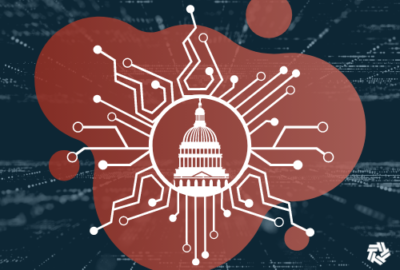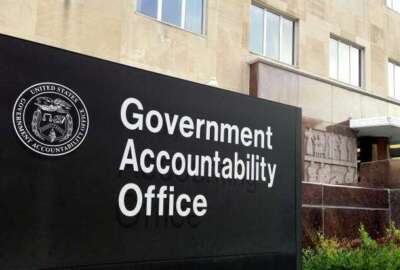Before the pandemic, federal agencies were experimenting and small-scale testing emerging technologies with the goal of streamlining, simplifying or speeding up what they already do. The complications of the past year-and-a-half only made the urgency for these ideas stronger.
To do this, several agencies have followed a pattern of restructuring their IT shops, embracing artificial intelligence and automation, or developing programs with less siloes. One of those to restructure was the Labor Department, which consolidated all IT shops under one Office of the Chief Information Officer about two-and-a-half years ago.
Krista Kinnard is Labor’s chief of Emerging Technologies in the OCIO and the first person to hold such a role. Her primary job is to work as a customer service organization, providing technology solutions and leadership which advance Labor’s mission, she said. Customer service and technology need to go hand-in-hand.
“It does me no good to build the greatest technology in the world that nobody can use. It also does me no good to not talk to end users to interface with them, to really understand their business challenge to be able to build those technology solutions,” she said during FCW’s Emerging Tech Workshop on Sept. 14.
As such, the Emerging Technologies organization at Labor has four strategic goals: Creating the DOL IT platform, modernizing legacy agency applications, securing and enhancing IT infrastructure, and transforming the customer experience. Kinnard said the OCIO is trying to operationalize emerging technologies and make their existing processes more efficient, so exploratory research and development is less of an emphasis right now.
That’s where their innovation incubator idea originated — and from the General Services Administration’s 10x program for crowdsourcing federal employees’ ideas.
“We don’t just want to explore it and say we explored it, we want to take what we explored and put it into practice,” she said.
In the case of the Army, emerging automation and artificial technologies have helped quicken the pace of advances. The Determination of Responsibility Assistant (DORA) bot is estimated to have saved up to 13 days of procurement administrative lead time annually, as it automatically checks contractors’ certifications and registration information. It checks in SAM.gov, including for Sec. 889 provisions that prohibit federal use of certain Chinese-state owned telecom equipment and services.
“We were inspired by a successful pilot of a determination of responsibility assistant-type of bot that was piloted by the IRS in 2018,” said Elizabeth Chirico, acquisition innovation lead for Future Operations, in the Office of the Deputy Assistant Secretary of the Army for Procurement. “So the contractor responsibility bot … it collects formats and provides contractor responsibility status to our contracting professionals. And it’s designed to assist our contracting officials to determine if a prospective contractor is responsible or not.”
DORA piloted in November 2019 and was deployed across the Army contracting enterprise in January 2020. It then extended to the Air Force and Navy with signed memoranda of agreement.
Chirico said her team’s goals include decreasing touch time on low value tasks; increasing contracting officer decision time and time spent on tasks that require more critical thinking; and better acquisition strategies, contract-type decisions and negotiation outcomes.
“And that gives us more time to conduct post-award activities. Also compliance with less touch time and decreasing the number of oversight hours required,” she said.
To do this, the organization uses metrics including the number of hours and dollars saved or cost avoidance, procurement, administrative lead time, contracting officer satisfaction, and the number of errors reduced or compliance, Chirico said.
Emerging technology is also seen as a way for U.S. Citizenship and Immigration Services to cut down on redundancy and inefficient or stovepipe processes which have plagued the agency for years. Efforts toward real-time streaming and event-driven architecture, and an API-first methodology and deliver mechanism, can help USCIS organizations deliver their product.
But USCIS Chief Technology Officer Robert Brown said redundancy persisted when delivering features and code throughout different operational directorates. So their approach was “essentially a reverse Conway’s Law,” that a software interface structure of a system will mirror the social boundaries of the organizations which produced it.
“[It] deals with illustrating what the architecture should be, and then sort of pushing that toward the different teams, the delivery and product teams, as well as back to the actual business units themselves,” Brown said. “And really what we started to discover with formulating this, from an architecture to the organizational constructs is seeing these groups come together, the operational groups and the different product delivery teams, and really focusing and understanding what those business functions are, as opposed to just sloughing off user story, and then writing code against it, without having a real good understanding of the business function behind it.”
He said the dividends on this work are starting to come through.
Copyright
© 2024 Federal News Network. All rights reserved. This website is not intended for users located within the European Economic Area.





